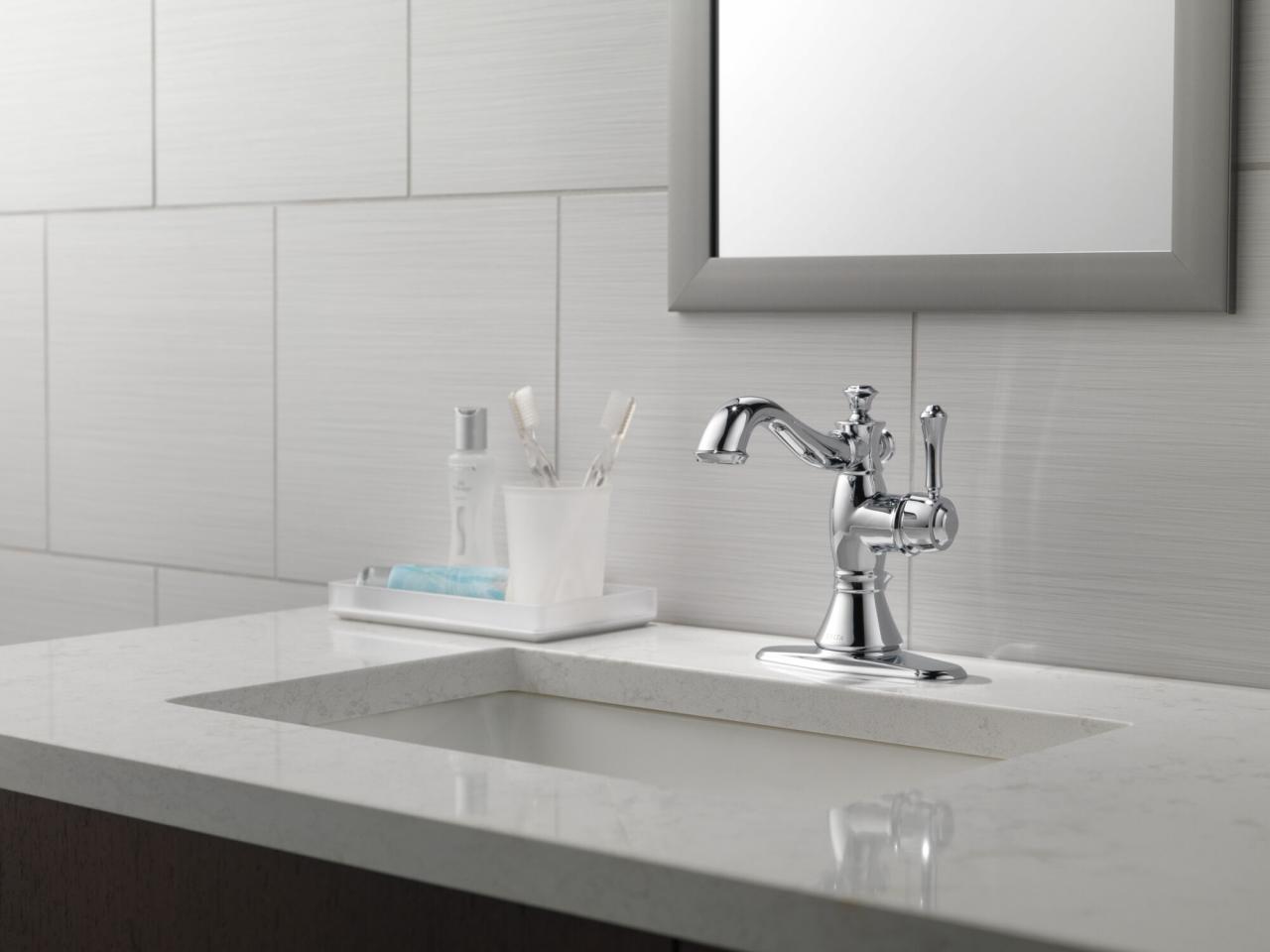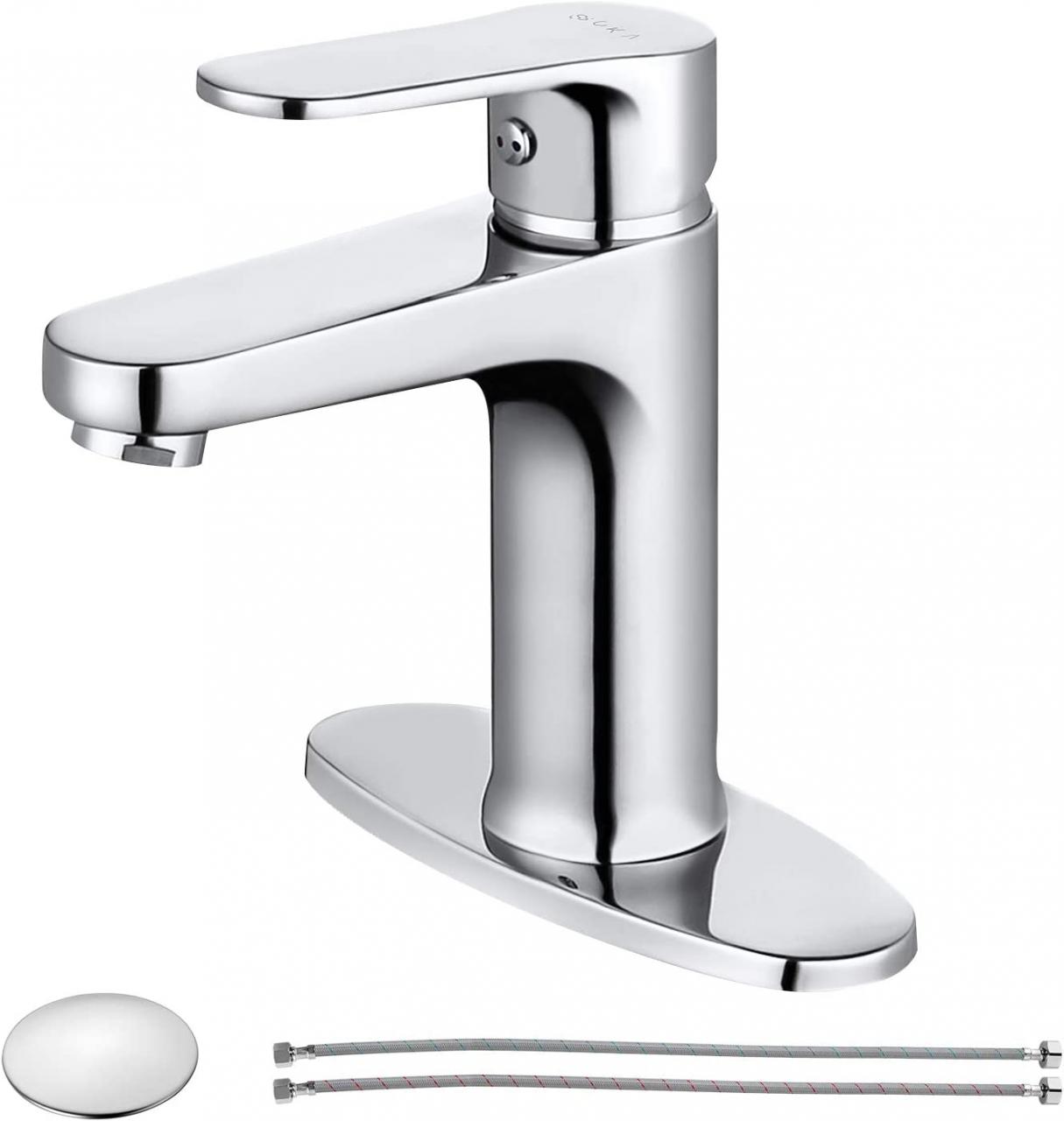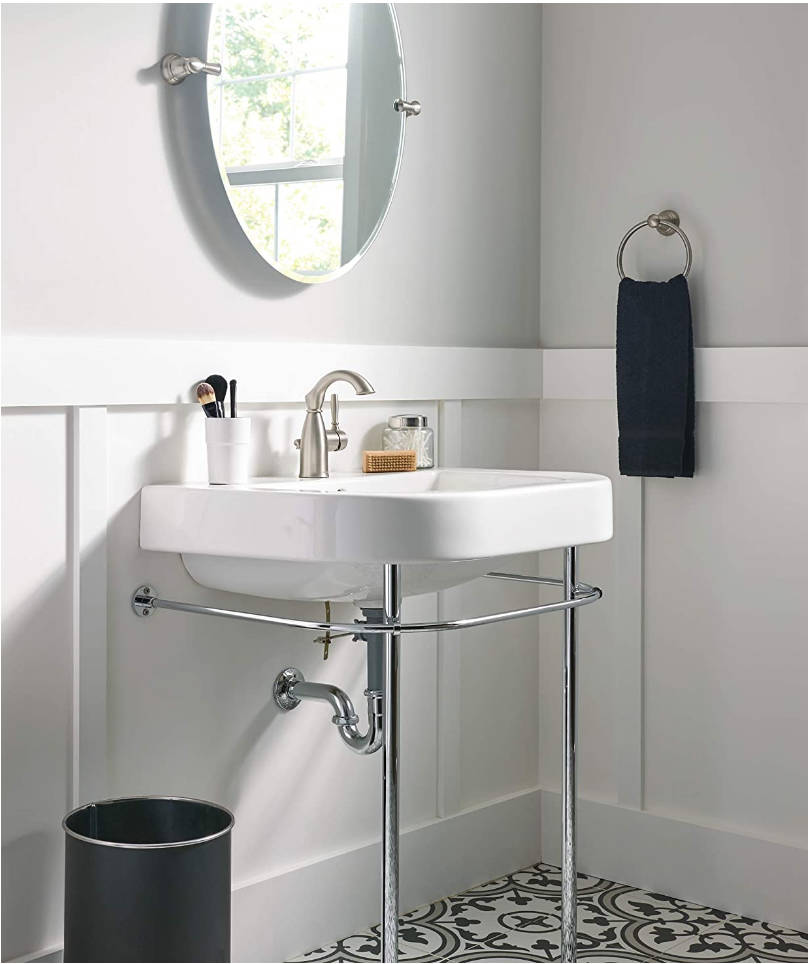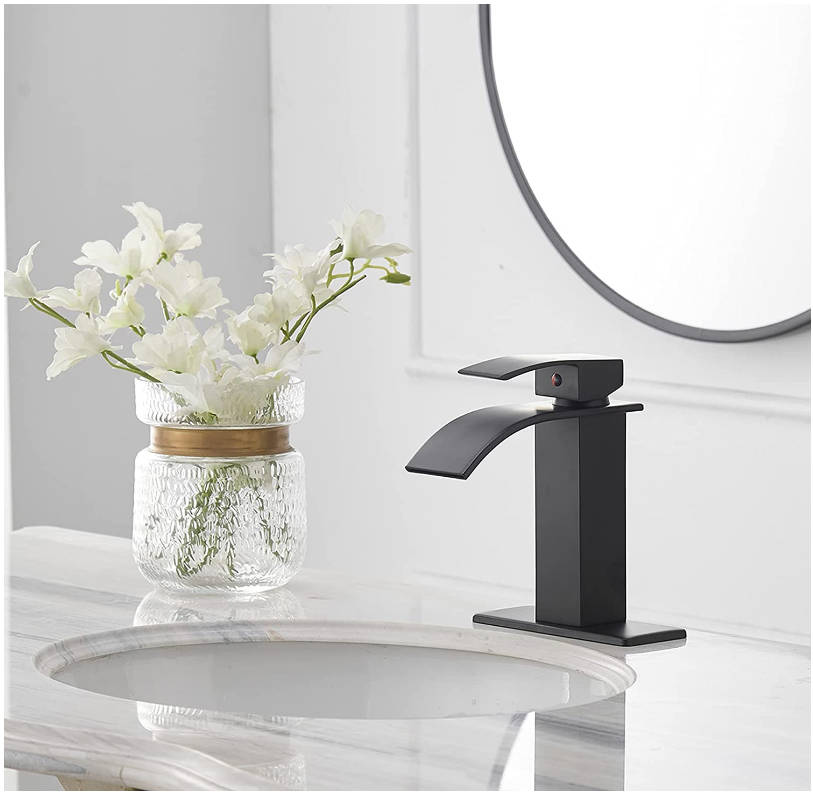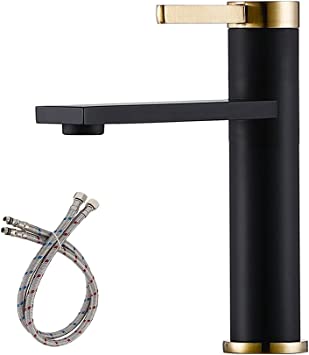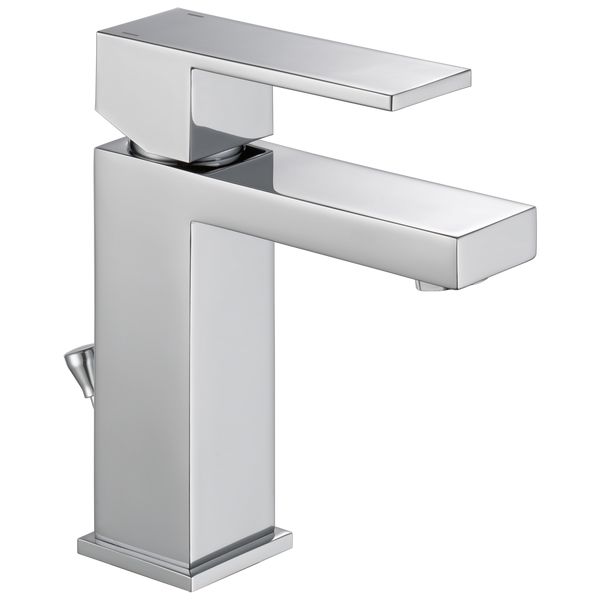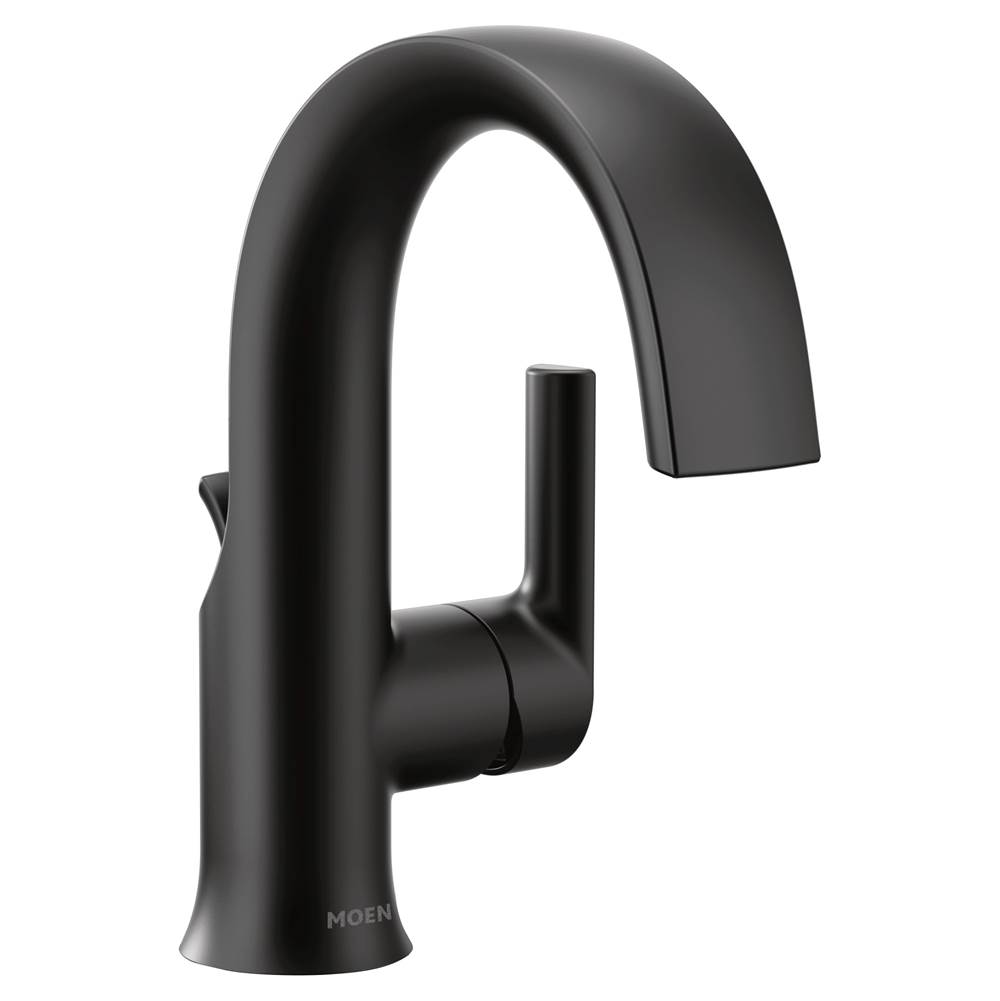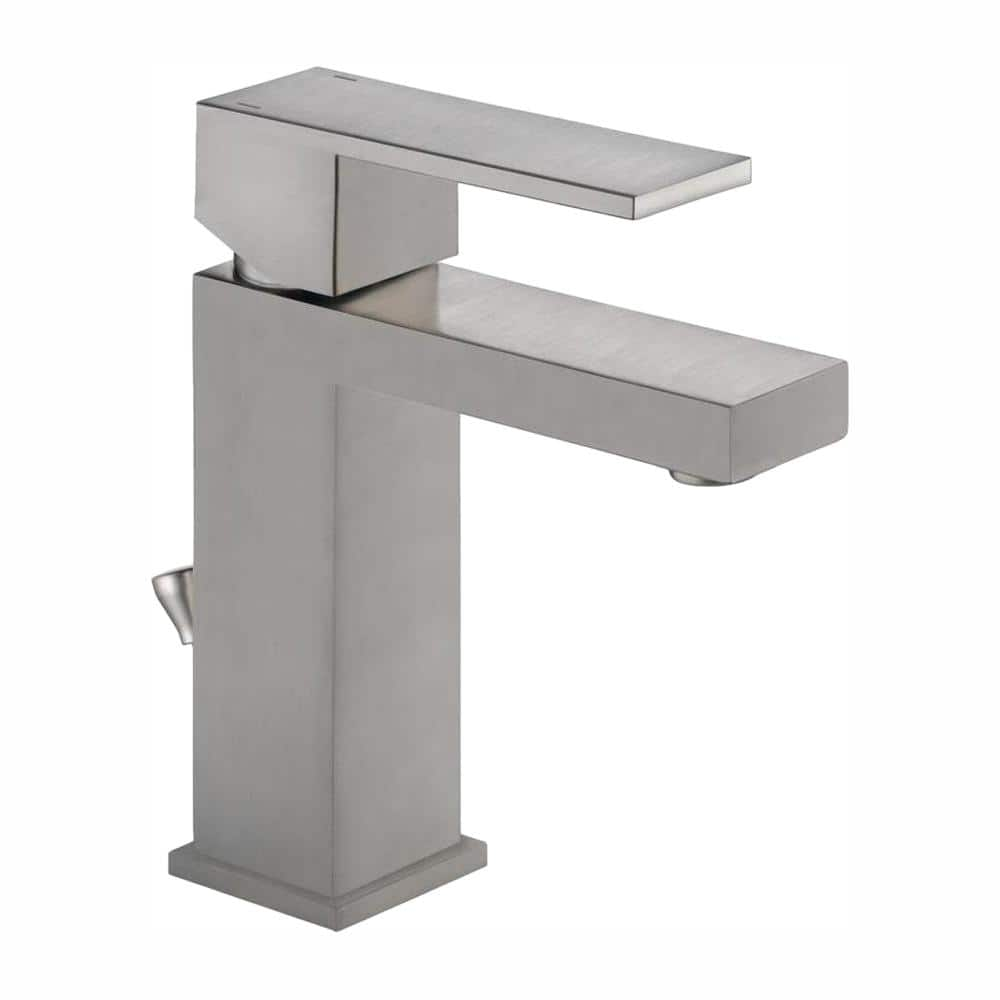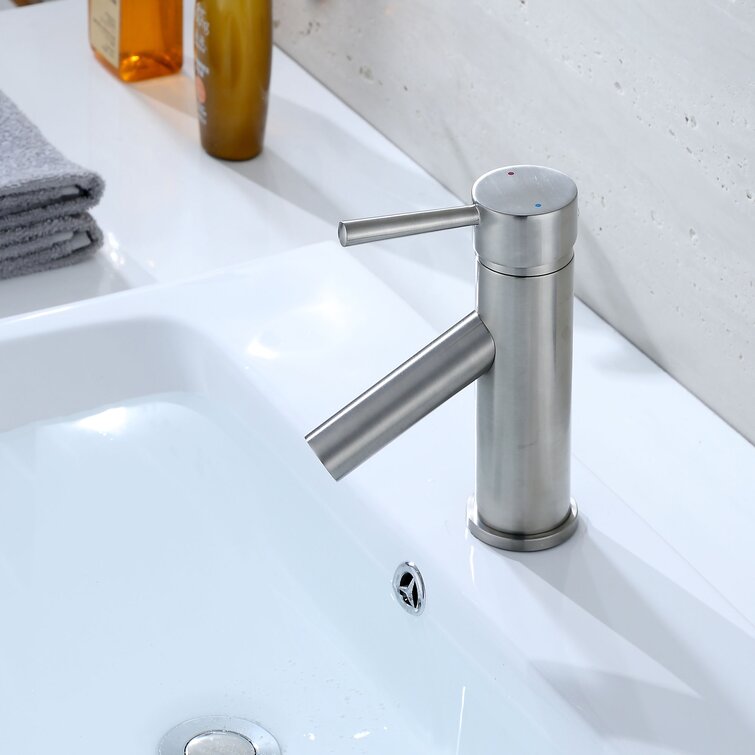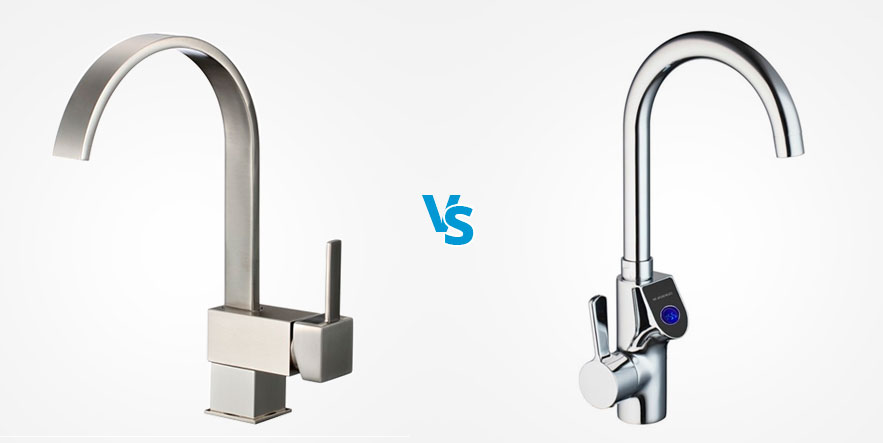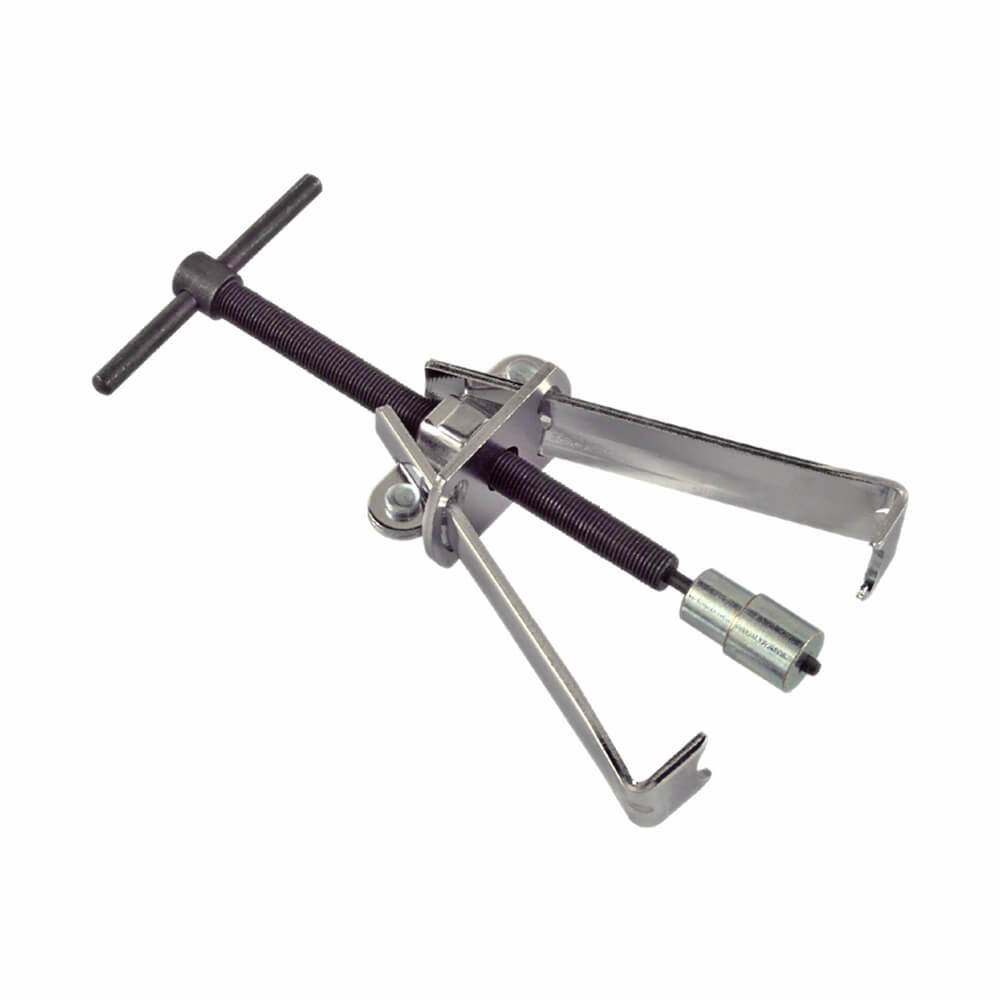Why Choose a Single Hole Bathroom Faucet?
Choosing the right bathroom faucet can make a world of difference in your daily routine and the overall aesthetic of your bathroom. Single hole bathroom faucets have become increasingly popular, and for good reason. Here’s why you should consider a single hole faucet for your next bathroom update.
- Sleek and Modern Design: One of the main reasons to choose a single hole bathroom faucet is its sleek and modern design. These faucets have a clean, streamlined look that can instantly update the look of your bathroom. Whether you’re going for a minimalist aesthetic or a contemporary vibe, a single hole faucet can complement various styles.
- Space-Saving Solution: Single hole faucets are perfect for small or compact bathrooms where space is at a premium. Since they only require one hole in the sink or countertop, they free up more space around the sink area. This can make your bathroom feel less cluttered and more open, giving you more room for other essentials.
- Ease of Installation: Installing a single hole faucet is typically easier than other types, such as widespread or wall-mounted faucets. With only one hole to drill, the installation process is straightforward, making it a great DIY project for homeowners looking to upgrade their bathroom fixtures without professional help.
- Improved Functionality: Single hole faucets often feature a single handle for controlling both water temperature and flow. This design can make adjusting the water easier and more intuitive, especially for young children or individuals with limited dexterity. The single handle design also tends to be more durable, with fewer parts that can break down over time.
- Variety of Styles and Finishes: Despite their minimalist design, single hole faucets come in a wide variety of styles and finishes. From sleek chrome to elegant brushed nickel, there’s a single hole faucet to match any bathroom decor. You can find faucets with different spout shapes, heights, and handle designs, allowing you to customize the look to suit your taste.
- Ease of Cleaning: Another advantage of single hole faucets is their ease of cleaning. With fewer crevices and joints, these faucets are less likely to accumulate dirt and grime. A quick wipe-down is usually all it takes to keep them looking shiny and new. This can save you time and effort in maintaining a clean and hygienic bathroom.
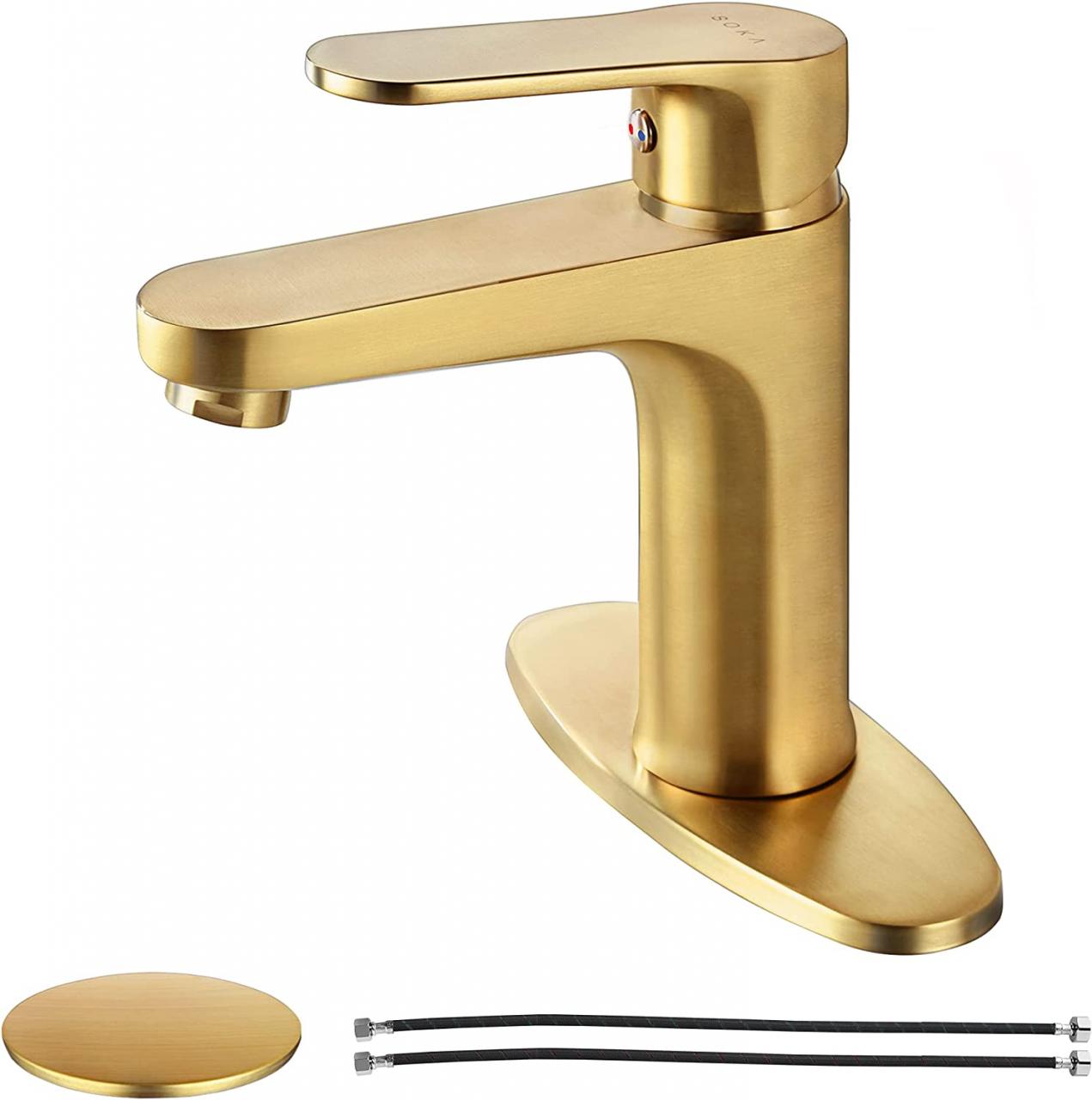
Types of Single Hole Bathroom Faucets
Single hole bathroom faucets are a popular choice for many homeowners due to their simplicity and versatility. However, not all single hole faucets are created equal. Here are the main types of single hole bathroom faucets to consider for your next bathroom upgrade.
Standard Single Hole Faucets: Standard single hole faucets are the most common type you’ll find. They typically feature a single handle that controls both the water temperature and flow. These faucets are easy to use and install, making them a popular choice for many bathrooms. They come in various styles and finishes, allowing you to match them to your bathroom decor.
Vessel Sink Faucets: Vessel sink faucets are designed specifically for vessel sinks, which sit on top of the countertop rather than being recessed into it. These faucets are usually taller than standard single hole faucets to accommodate the height of the vessel sink. They can add a touch of elegance and modernity to your bathroom, especially when paired with a stylish vessel sink.
Waterfall Faucets: Waterfall faucets are a unique type of single hole faucet that creates a waterfall effect when the water flows. These faucets have a flat spout that allows the water to cascade out in a smooth, wide stream. Waterfall faucets can add a luxurious and spa-like feel to your bathroom. They come in various designs, from sleek and modern to more traditional styles.
Touchless Faucets: Touchless faucets, also known as motion sensor faucets, are becoming increasingly popular in modern bathrooms. These faucets are equipped with sensors that detect your hand movements, allowing you to turn the water on and off without touching the faucet. Touchless faucets are hygienic and convenient, reducing the spread of germs and making it easier to keep your bathroom clean.
Wall-Mounted Single Hole Faucets: Although not as common as deck-mounted single hole faucets, wall-mounted single hole faucets offer a unique and stylish option for your bathroom. These faucets are mounted on the wall above the sink, freeing up counter space and creating a sleek, modern look. Wall-mounted faucets can be a bit more challenging to install, as they require plumbing to be run through the wall, but the result can be well worth the effort.
Waterfall Faucets: For those looking to add a touch of luxury to their bathroom, waterfall faucets are a fantastic option. These faucets have a flat, open spout that allows water to flow out in a gentle, waterfall-like stream. The calming effect of the water flow can create a spa-like atmosphere in your bathroom, making it a relaxing retreat.
Materials and Finishes: Finding the Perfect Look
When it comes to selecting a single hole bathroom faucet, the material and finish are just as important as the design. The right combination can enhance the overall look of your bathroom and provide durability. Here are some popular materials and finishes to consider.
Brass Faucets
Brass is a durable and versatile material commonly used in bathroom faucets. Brass faucets are resistant to corrosion and can withstand high water pressure, making them a long-lasting choice. They come in various finishes, including polished, brushed, and antique, allowing you to choose a look that matches your bathroom decor.
Stainless Steel Faucets
Stainless steel is another popular material for bathroom faucets due to its durability and resistance to rust and corrosion. Stainless steel faucets have a sleek, modern look and are easy to clean. They are available in a range of finishes, from polished to brushed, and can complement a variety of bathroom styles.
Chrome Finishes
Chrome is one of the most popular finishes for bathroom faucets due to its shiny, reflective surface and affordability. Chrome faucets are easy to clean and maintain, as they resist tarnishing and corrosion. They can add a touch of modern elegance to your bathroom, making them a versatile choice for various decor styles.
Brushed Nickel Finishes
Brushed nickel finishes are known for their warm, matte appearance and durability. This finish is resistant to fingerprints and water spots, making it a practical choice for busy bathrooms. Brushed nickel faucets can add a sophisticated, timeless look to your bathroom and pair well with both traditional and contemporary styles.
Oil-Rubbed Bronze Finishes
Oil-rubbed bronze finishes offer a rich, dark look that can add warmth and character to your bathroom. This finish is created by applying a dark coating to the faucet and then rubbing it with oil to create a distressed, antique appearance. Oil-rubbed bronze faucets can complement rustic, vintage, or traditional bathroom designs.
Matte Black Finishes
Matte black finishes have become increasingly popular in modern bathroom designs. This bold, contemporary finish adds a sleek and sophisticated look to your bathroom. Matte black faucets are resistant to fingerprints and water spots, making them easy to maintain. They can create a striking contrast with lighter-colored countertops and sinks.
Installation Tips for Single Hole Bathroom Faucets
Installing a single hole bathroom faucet can be a rewarding DIY project. With the right tools and a bit of patience, you can transform your bathroom in no time. Here are some tips to help you through the installation process.
Gather Your Tools and Supplies
Before you begin, make sure you have all the necessary tools and supplies. You’ll need a wrench, plumber’s tape, a basin wrench, and silicone caulk. Additionally, check the manufacturer’s instructions for any specific tools or materials required for your faucet model.
Turn Off the Water Supply
The first step in any plumbing project is to turn off the water supply. Locate the shutoff valves under the sink and turn them clockwise to close. If there are no individual shutoff valves, you may need to turn off the main water supply to your home. Once the water is off, open the faucet to release any remaining water in the lines.
Remove the Old Faucet
If you’re replacing an old faucet, you’ll need to remove it first. Disconnect the water supply lines from the faucet using a wrench. Use a basin wrench to loosen and remove the mounting nuts securing the faucet to the sink or countertop. Once the old faucet is loose, lift it out and clean the area to remove any old caulk or debris.
Install the New Faucet
Place the gasket or rubber seal (if provided) on the bottom of the new faucet. Insert the faucet through the hole in the sink or countertop. From underneath, secure the faucet with the mounting nuts, tightening them with a basin wrench. Make sure the faucet is centered and aligned properly before fully tightening the nuts.
Connect the Water Supply Lines
Attach the water supply lines to the corresponding hot and cold water inlets on the faucet. Use plumber’s tape on the threads to ensure a watertight seal. Tighten the connections with a wrench, but be careful not to overtighten and damage the fittings. Once the connections are secure, turn on the water supply and check for leaks.
Seal the Edges
To prevent water from seeping under the faucet, apply a bead of silicone caulk around the base where it meets the sink or countertop. Smooth the caulk with your finger or a caulk tool for a clean finish. Allow the caulk to dry completely before using the faucet. Your new single hole bathroom faucet is now ready to use!
Maintenance and Cleaning
Keeping your single hole bathroom faucet clean and well-maintained is essential for its longevity and performance. With regular care, your faucet can look and function like new for years to come. Here’s how to maintain and clean your single hole bathroom faucet effectively.
Regular Wiping and Dusting
To prevent buildup and keep your faucet looking its best, make it a habit to wipe it down regularly. Use a soft, damp cloth to remove dust and water spots from the surface. For daily maintenance, simply dry the faucet with a clean towel after each use to prevent water stains and mineral deposits from forming.
Use the Right Cleaning Products
When cleaning your faucet, choose mild, non-abrasive cleaners. Harsh chemicals and abrasive sponges can scratch or damage the finish. For most faucets, a mixture of warm water and mild dish soap is sufficient. Apply the solution with a soft cloth, then rinse with clean water and dry thoroughly.
Dealing with Mineral Deposits
Over time, mineral deposits from hard water can accumulate on your faucet, leading to a cloudy or spotted appearance. To tackle this, use a mixture of equal parts white vinegar and water. Soak a cloth or sponge in the solution and gently scrub the affected areas. For stubborn deposits, you might need to let the vinegar solution sit for a few minutes before wiping it away.
Inspect for Leaks
Regularly check your faucet for any signs of leaks or drips. A dripping faucet can be a sign of a worn-out washer or cartridge that needs replacing. If you notice any leaks, address them promptly to prevent water damage and conserve water. Tightening loose connections or replacing faulty parts can often resolve minor leaks.
Polish the Finish
To keep the finish of your faucet shiny and new, consider using a specialized faucet polish or cleaner designed for the material of your faucet. For example, chrome faucets can benefit from a chrome polish, while brushed nickel faucets may need a nickel-specific cleaner. Apply the polish according to the manufacturer’s instructions and buff it with a soft cloth.
Check and Replace Seals
The seals and gaskets around your faucet can wear out over time, leading to leaks or reduced performance. Inspect these parts periodically and replace them if necessary. Many faucet manufacturers offer replacement parts that are compatible with their products. Replacing worn seals can help maintain the functionality and appearance of your faucet.
Troubleshooting Common Issues
Even with proper maintenance, you might encounter some issues with your single hole bathroom faucet. Here’s a guide to troubleshooting common problems and finding solutions.
Low Water Pressure
If you’re experiencing low water pressure from your faucet, it could be due to a clogged aerator. Remove the aerator from the spout and clean it thoroughly to remove any debris or mineral buildup. If the problem persists, check the water supply valves under the sink to ensure they are fully open. Sometimes, low water pressure can also be a result of issues with the home’s plumbing system.
Dripping Faucet
A dripping faucet is not only annoying but can also waste a significant amount of water. Most often, a dripping faucet is caused by a worn-out cartridge or valve seat. To fix this, you’ll need to disassemble the faucet and inspect the cartridge or valve seat for damage. Replacing the faulty part should stop the drip and restore proper function.
Hard to Turn Handle
If the faucet handle is hard to turn or feels stiff, it could be due to mineral deposits or internal parts that need lubrication. Remove the handle and clean any mineral deposits from the handle and valve assembly. Apply a small amount of lubricant to the moving parts to ensure smooth operation. If the problem continues, there may be an issue with the internal cartridge that needs replacement.
Water Leaks from Base
Leaks around the base of the faucet can indicate a problem with the mounting hardware or seals. Check the mounting nuts and ensure they are tightened securely. If the leak persists, you may need to replace the O-ring or gasket located under the base of the faucet. Applying a fresh bead of silicone caulk around the base can also help prevent leaks.
Temperature Fluctuations
If you experience sudden changes in water temperature, it might be due to a faulty temperature control cartridge or mixing valve. Inspect these components for any signs of damage or wear. Replacing the cartridge or valve can help restore consistent water temperature and prevent fluctuations.
Unusual Noises
If you hear unusual noises like banging or whining when using your faucet, it could be caused by loose internal parts or high water pressure. Check the faucet’s components to ensure everything is securely fastened. If the noise is related to water pressure, you may need to install a pressure-reducing valve to stabilize the flow.
Single Handle Project-Pack Bathroom Faucet in Chrome
Matte black one-handle bathroom faucet
Delta Modern Single Hole Single-Handle Bathroom Faucet
Euro Single Hole Bathroom Faucet
Related Posts:
- Moen Bathroom Faucet Aerator Diagram
- How To Repair A Peerless Bathroom Faucet
- American Standard Bathroom Faucets Reviews
- Universal Bathroom Faucet Handles
- Removing A Delta Bathroom Faucet
- Kingston Brass Metropolitan Bathroom Faucet
- Discount Moen Bathroom Faucets
- Kohler Fairfax Single Hole Bathroom Faucet
- Hansgrohe Bathroom Faucets Reviews
- Glacier Bay Teapot Bathroom Faucet
